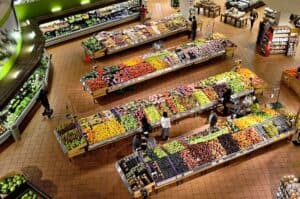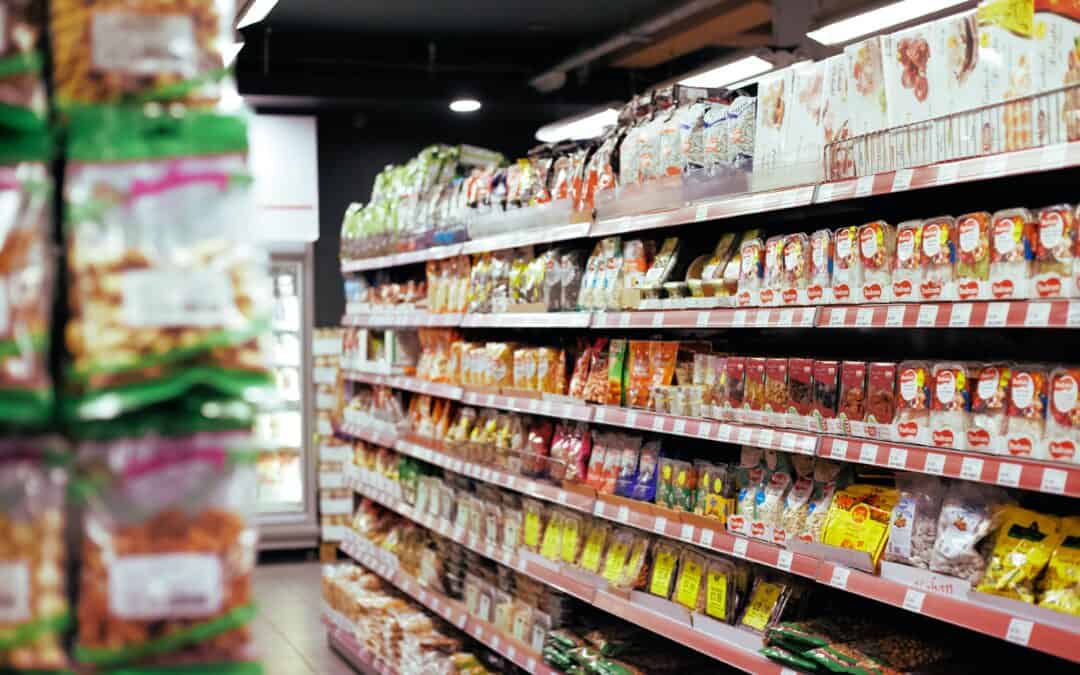INTRODUCTION
Has a new grocery or convenience store opened down the road from your store? Are your customers’ expectations shifting? To stay competitive, you need to consider renovating or updating your grocery store.
According to a study by Monash University, retail sales increased by nearly 50% after retail stores were remodeled. Several national grocers, including Aldi, Publix and Walmart, are realizing this as they have invested millions of dollars to renovate their stores.
STAGES
 The remodel of your grocery store should be completed in stages and strategically planned. The first stage of a remodel is typically design and development. Here, the team works together to create a balanced design plan that fits your budget.
The remodel of your grocery store should be completed in stages and strategically planned. The first stage of a remodel is typically design and development. Here, the team works together to create a balanced design plan that fits your budget.
Next is the drawing phase. Once you’ve finalized the design, the team will then complete the construction plan and interior design drawings. After that, construction and the permit process begin.
Keep in mind that smaller interior updates can be done without shutting down your store, and this is why planning the various construction stages is crucial. In our experience, a typical remodel can take somewhere between 6-12 months.
INSIDE
Since the pandemic, grocery stores are increasingly needing every square-foot of space available to them. Therefore, oversized customer service counters, offices and backroom seasonal storage areas are typical targets for remodeling.
Your grocery store would likely benefit from Automated Storage and Retrieval Systems (ASRS). ASRS technology can take a lot of different forms, so determine what your needs are before deciding how you want to automate. It can not only improve safety but make grocery operations more efficient.
To make your space feel less congested, the trend for grocery stores is moving to the “open ceiling” concept and focusing on the aesthetic appeal for different departments. For example, while most supermarket floors use the standard vinyl composition tile, decorative styles (wood, stone or metal-like design) create a more welcoming environment and go well in departments like wine or floral.
Adding a deli or bakery can help get consumers into your grocery store. According to the Retail Deli Survey, grocery stores are seeing a 78 percent increase in dollar sales and an 80 percent increase in unit volume sales through their food programs.
Another aspect to add to your grocery store is self-checkout. According to RBR, global shipments of self-checkout terminals increased 52% year over year in 2019, with food retailers being one of the highest markets. Since they require no direct workforce to implement, self-checkout counters can save space and increase store capacity. Start by adding 3-4 and then monitor sales.
OUTSIDE
These days, grocery stores are making pickup and the entire shopping time more of an experience. Work with your architect/design team to add more open space, both indoors and outdoors. For example, have the pickup spot also serve as a place where customers can buy a takeout meal.
Since online grocery sales are expected to continue post pandemic, your parking lot may need to be redesigned to coincide with the pickup area. Establish a dedicated pickup zone for your curbside customers to make your parking lot flow more efficiently. For example, clear signage, curbside lanes and pick-up only carports are make this area stand out. A remodel could also include a temperature-controlled storage shed to improve efficiency and maintain the quality of the groceries for the customer.
Another trend is to create space where customers can kill time. That allows one family member to shop while the others have something to do while they wait. For example, a Whole Foods Market in Atlanta added an outdoor area that had games, a bar and a place to hang out.
FOR MORE INFORMATION
FoxArneson is a commercial design/build construction company that specializes in the grocery industry industries.

